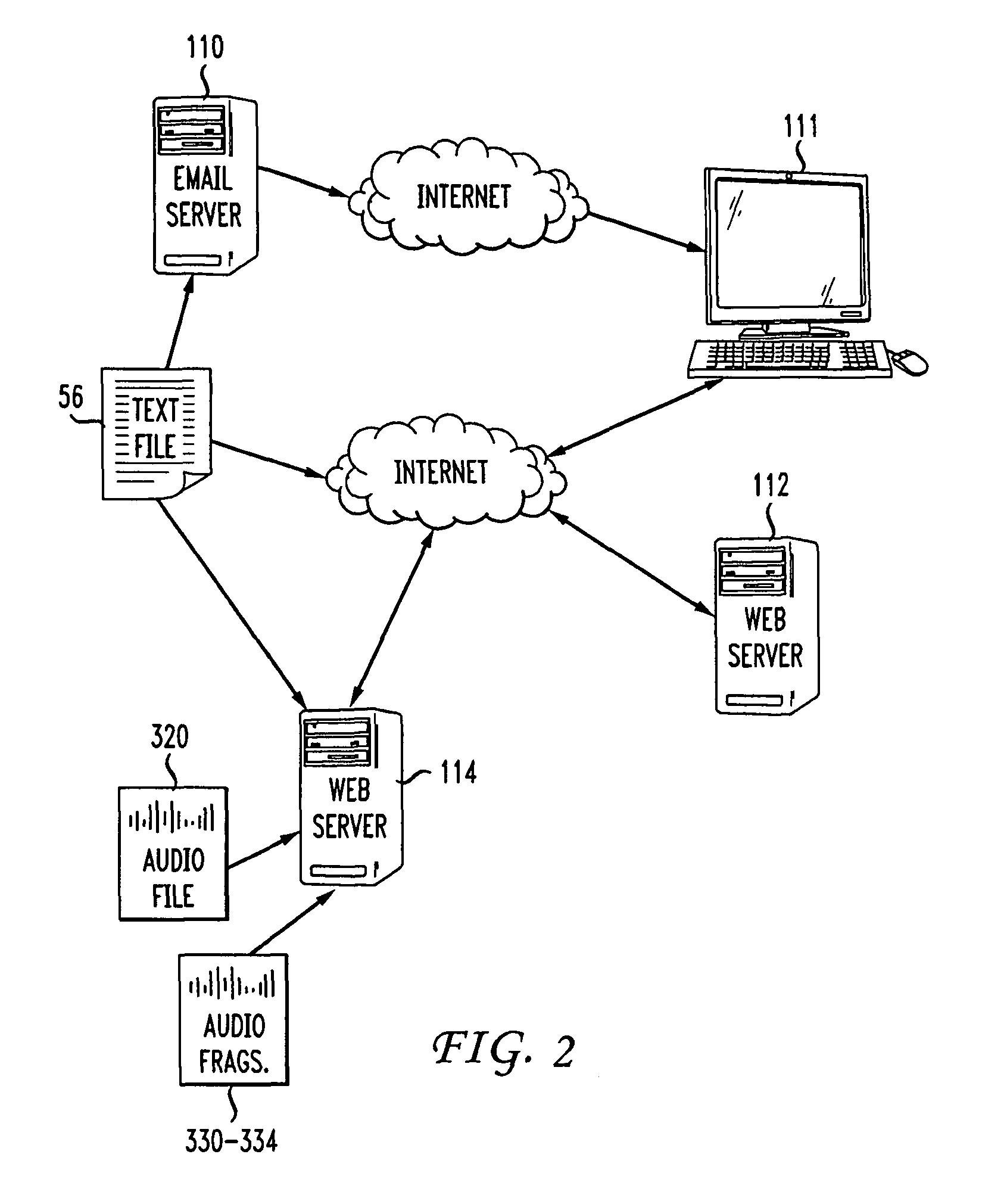Precision speech to text conversion
a text conversion and speech technology, applied in the field of speech to text conversion engine, can solve the problems of many versions of installed speech recognition software out of date (and hence less accurate), large vocabulary of potential words that a user might speak, and increase pipeline delay.
- Summary
- Abstract
- Description
- Claims
- Application Information
AI Technical Summary
Benefits of technology
Problems solved by technology
Method used
Image
Examples
fragment embodiment
Overlapping Fragment Embodiment
[0064]In this embodiment, the audio fragments are not necessarily discrete fragments that do not overlap. For example, a conscious choice is made that all audio fragments will be approximately 10 seconds (or any other suitable time period). Fragmentation module 324 then fragments the incoming audio according to elapsed time as follows. Fragment 1 lasts from 0-10 seconds, fragment 2 lasts from 5-15 seconds, fragment 3 lasts from 10-20 seconds, et cetera. Thus, each audio fragment overlaps the previous fragment by 5 seconds and overlaps the subsequent fragment by 5 seconds. Of course, longer or shorter overlaps may be used, for example, each fragment may only overlap another fragment by 1 second. Longer overlaps have the potential to produce more accurate results because more agents are looking at the same section of audio, but more agents are required and processing time can be longer. Shorter overlaps require fewer agents. If no overlap is used the pot...
PUM
 Login to View More
Login to View More Abstract
Description
Claims
Application Information
 Login to View More
Login to View More - R&D
- Intellectual Property
- Life Sciences
- Materials
- Tech Scout
- Unparalleled Data Quality
- Higher Quality Content
- 60% Fewer Hallucinations
Browse by: Latest US Patents, China's latest patents, Technical Efficacy Thesaurus, Application Domain, Technology Topic, Popular Technical Reports.
© 2025 PatSnap. All rights reserved.Legal|Privacy policy|Modern Slavery Act Transparency Statement|Sitemap|About US| Contact US: help@patsnap.com



